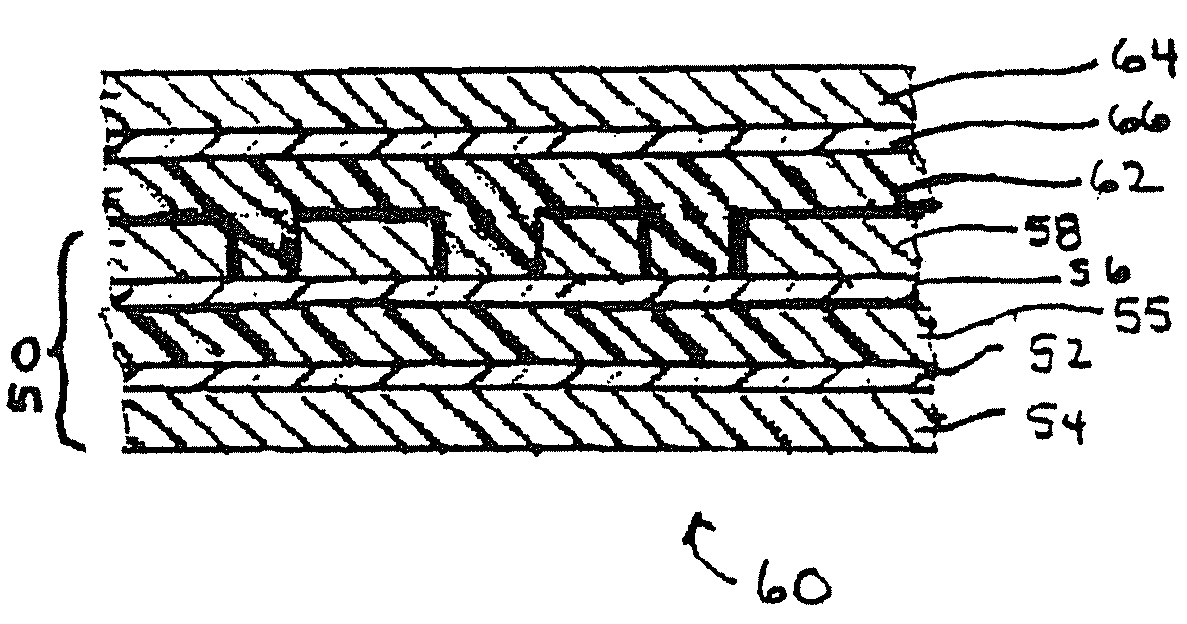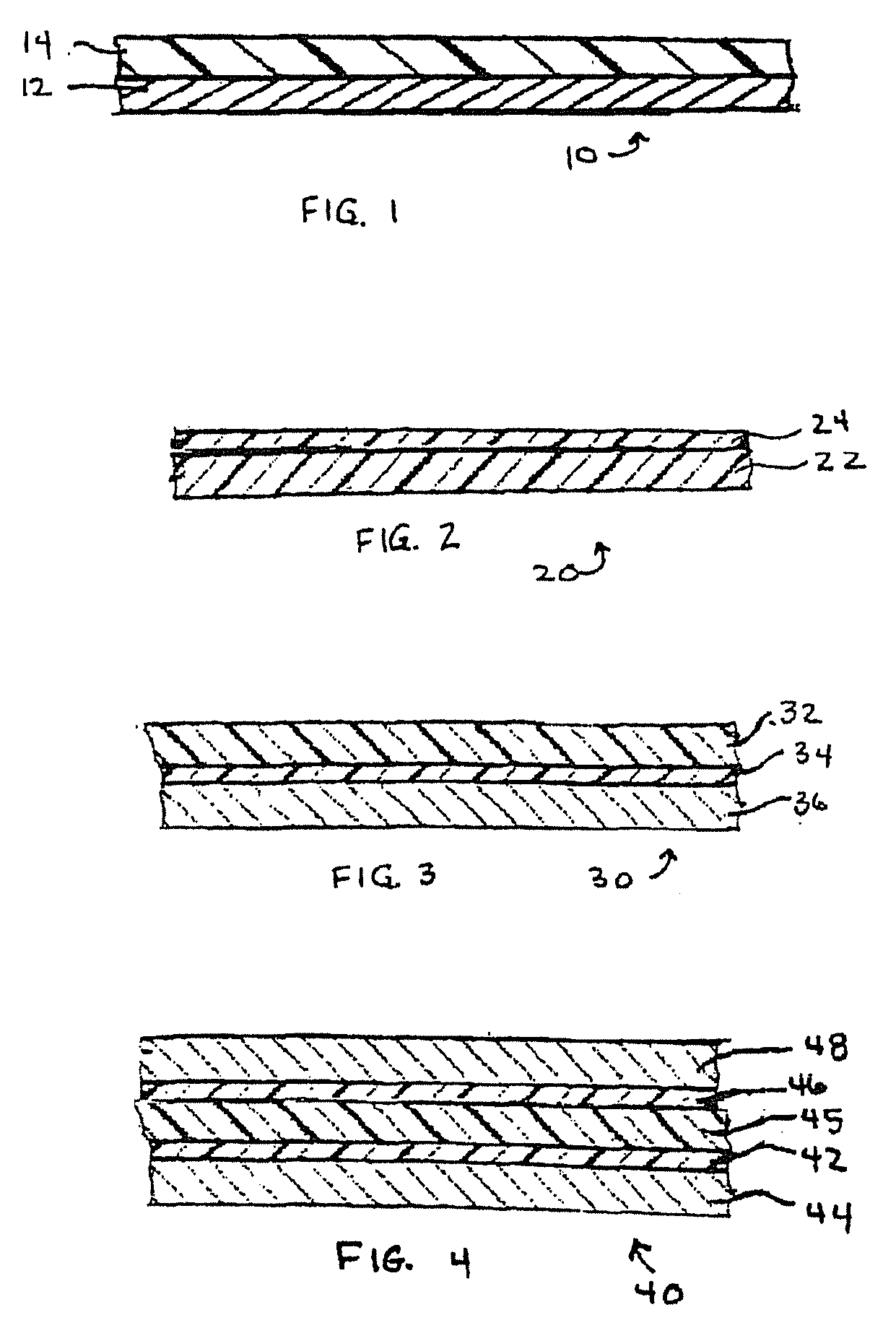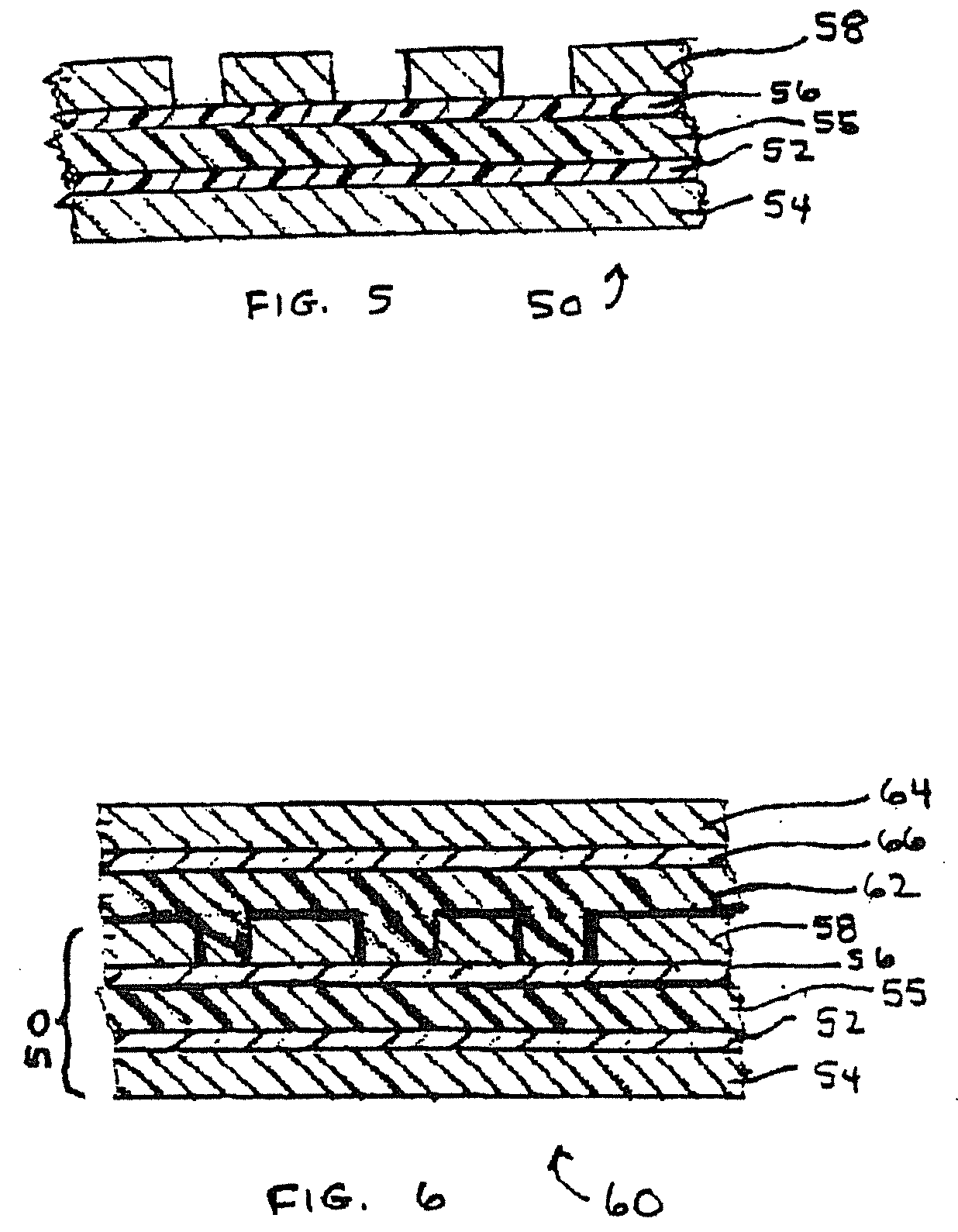Circuit materials with improved bond, method of manufacture thereof, and articles formed therefrom
- Summary
- Abstract
- Description
- Claims
- Application Information
AI Technical Summary
Benefits of technology
Problems solved by technology
Method used
Image
Examples
examples
[0080]The materials listed in Table 2 were used in the following examples.
TABLE 2Material nameChemical nameSupplierPPE-MAMaleinized polyphenylene etherAsahiBlendex HPP820Unmodified polyphenylene etherChemturaRicon ® 184MA6Butadiene-styrene copolymer adducted withSartomermaleic anhydrideHycar 2000 X168Vinyl-terminated polybutadieneNoveonTE 2000Polybutadiene with urethane linkagesNippon SodaB3000Vinyl-terminated polybutadieneNippon SodaBN1015Maleinated polybutadieneNippon SodaKraton ® D-1118SB diblock copolymer (20%) and SBS triblockShell Chemicalcopolymer (80%)RO-4350BFlame retardant thermosetting hydrocarbon-basedRogers Corp.circuit substrate materialRO-4233Thermosetting hydrocarbon-based circuitRogers Corp.substrate materialFRFlame retardant nonpolar circuit substratematerial containing Mg(OH)2 (U.S. Pat. No.7,022,404 to Sethumadhavan et al.)TOC-500Low profile standard copper, zinc freeOak-MitsuiTOC-500-LZLow profile copper, with light zinc flushOak-MitsuiTWSHigh profile copper foi...
examples 17-23
[0108]These Examples demonstrate the suitability of these adhesive formulations for effective and economical coating on standard production equipment, as well as the wide range of formulations over which the copper peel strength and high temperature resistance are improved.
[0109]Commercial scale coating trials of 25-inch (63.5-centimeter) wide rolls of copper foil were conducted on a slot die coater using the formulations shown in Table 8 (amounts shown are in grams). The six formulations we coated at line speeds of 30 feet / minute (fpm) (9.14 meter / minute) onto both Gould TWS high profile copper foil and Oak Mitsui MLS-TOC-500-LZ reverse-treated (low profile) copper foil (Ex. 17-Ex. 22). Formulation 20 was also coated at 60 fpm, simply to demonstrate that higher speed coating was possible (Ex. 23). The coating basis weights ranged from 6 to 8 gsm. The samples were dried in a three-zone in-line oven with drying temperatures of 100° C., 125° C., and 150° C. Approximately 250 linear fe...
PUM
| Property | Measurement | Unit |
|---|---|---|
| Length | aaaaa | aaaaa |
| Length | aaaaa | aaaaa |
| Frequency | aaaaa | aaaaa |
Abstract
Description
Claims
Application Information
 Login to View More
Login to View More - R&D
- Intellectual Property
- Life Sciences
- Materials
- Tech Scout
- Unparalleled Data Quality
- Higher Quality Content
- 60% Fewer Hallucinations
Browse by: Latest US Patents, China's latest patents, Technical Efficacy Thesaurus, Application Domain, Technology Topic, Popular Technical Reports.
© 2025 PatSnap. All rights reserved.Legal|Privacy policy|Modern Slavery Act Transparency Statement|Sitemap|About US| Contact US: help@patsnap.com



